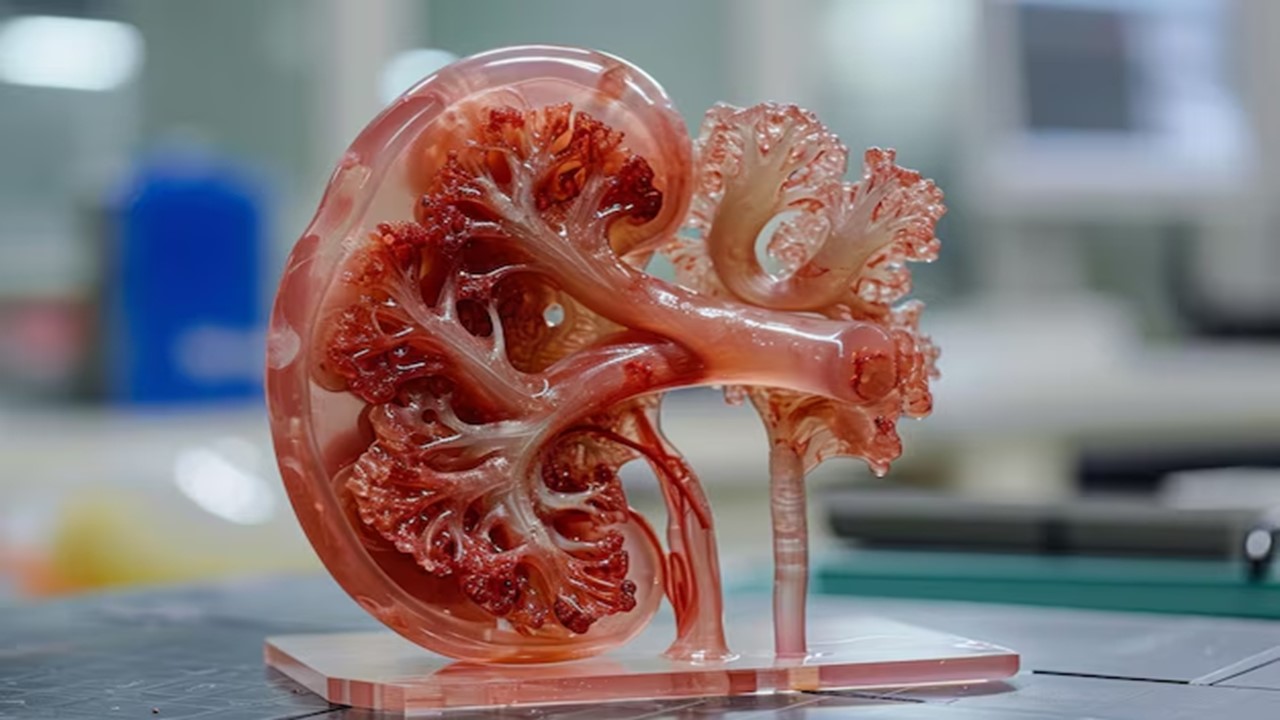The Human Visual System Reimagined
The human visual system, an intricate blend of optical and neural components, allows us to process the world in vivid detail. Yet, the natural limitations of retinal cells confine our perception to a narrow spectrum of light. For decades, researchers have sought to replicate and extend this biological marvel, aiming to fuse artificial intelligence with neuromorphic engineering. Enter photonic synaptic transistors: devices poised to bridge the gap between human-like sensory capabilities and next-generation computing.
These transistors, constructed from polycrystalline molybdenum disulfide (MoS₂), are not only capable of mimicking human retinal functions but also promise to extend our vision beyond visible light. By integrating sensing, processing, and memory into a single platform, these devices may pave the way for artificial retinas capable of interacting seamlessly with neural networks.
Expanding the Limits of Vision
Human eyes can only detect visible light, leaving near-infrared wavelengths imperceptible. MoS₂ photonic synaptic transistors overcome this limitation through their multilayer architecture, enabling photodetection across a broader spectrum. Unlike traditional retinal cells, which rely solely on biological pathways, these devices utilize optoelectronic properties to absorb and process light signals.
By leveraging charge-trapping centers intrinsic to the MoS₂ structure, the transistors convert light into electrical signals with unmatched efficiency. This capability not only extends sensory perception but also enhances the device’s responsiveness. Operating at speeds as fast as 5 microseconds, the transistors are four orders of magnitude faster than their biological counterparts. Such advancements suggest a future where artificial systems surpass human sensory boundaries, enabling applications from advanced imaging to machine vision.
Efficiency Redefined: Ultralow Power, Maximum Output
One of the most remarkable attributes of MoS₂-based photonic transistors is their ultralow energy consumption. Operating at approximately 40 attojoules per optical pulse, these devices require orders of magnitude less energy than biological synapses. For perspective, a typical neural synapse consumes approximately 10 femtojoules per spike—a difference that could revolutionize energy-efficient computing.
This unparalleled energy efficiency stems from the device’s innovative mechanism of charge trapping and detrapping. Unlike conventional photonic systems that require high power, MoS₂ transistors trap carriers in defect sites or dangling bonds, maintaining signal integrity without excessive energy demands. This mechanism not only conserves power but also enhances the longevity of signals, making the devices ideal for neuromorphic applications requiring continuous processing and storage.
The Neuroscience of Artificial Synapses
To emulate the complexity of biological neural networks, MoS₂ transistors exhibit key synaptic functions such as short-term plasticity (STP), long-term plasticity (LTP), and paired-pulse facilitation (PPF). These features are essential for associative learning, memory retention, and sensory adaptation.
STP and LTP represent distinct memory mechanisms. While STP enables the rapid but transient retention of information, LTP governs the consolidation of long-term memories. MoS₂ devices replicate these processes by adjusting the intensity and duration of photoresponse signals. When exposed to successive light pulses, the devices increase their excitatory post-synaptic current (EPSC), mimicking the synaptic strengthening observed in Hebbian learning. Additionally, the devices emulate the classical Pavlovian conditioning paradigm, reinforcing associative connections between stimuli over time.
Paired-pulse facilitation, a phenomenon where consecutive stimuli amplify neural responses, further underscores the device’s biomimetic potential. By fine-tuning the pulse intervals, researchers demonstrated the ability to simulate age-related changes in learning and memory—a step toward creating systems that mirror human neural development.
Emotions and Memory: The Role of Backgate Modulation
Human memory is influenced by emotions, with positive states often enhancing recall and negative states impeding it. Remarkably, MoS₂ transistors incorporate this phenomenon through backgate voltage modulation. By applying a small negative voltage, researchers enhanced the device’s EPSC, simulating the effect of positive emotional states on memory retention. Conversely, a positive voltage diminished the EPSC, mirroring the impact of negative emotions.
This capability offers profound implications for artificial intelligence and neuromorphic computing. Emotional modulation could allow artificial systems to prioritize certain memories or sensory inputs based on contextual importance. For instance, robots equipped with such technology could exhibit human-like adaptability, processing information differently based on environmental stimuli or task requirements.
From Vision to Intelligence: Neuromorphic Imaging
The integration of vision and intelligence is a hallmark of human cognition. Inspired by this interplay, MoS₂ transistors offer a platform for neuromorphic imaging—simultaneously capturing and processing visual data. In experiments simulating letter recognition, the devices demonstrated distinct contrasts between STP and LTP states. This differentiation facilitates efficient pre-processing, enabling machines to filter irrelevant information while retaining critical data.
Such capabilities hold promise for advanced applications, including autonomous navigation, medical diagnostics, and augmented reality. By combining real-time sensing with memory and computation, these devices could revolutionize machine vision systems, making them more efficient, adaptable, and context-aware.
Toward the Artificial Brain
At the heart of these advancements lies the synthesis of polycrystalline MoS₂ films via chemical vapor deposition (CVD). This technique ensures uniformity across large areas, a prerequisite for scalable neuromorphic systems. The transistors’ three-terminal architecture further distinguishes them from traditional two-terminal designs, offering greater flexibility in modulating neural functions.
The broader implications of this work extend to overcoming the von Neumann bottleneck—a limitation of traditional computing architectures that separate memory and processing units. By integrating these functions into a single platform, MoS₂ transistors could usher in an era of energy-efficient neuromorphic computing. Moreover, their compatibility with flexible substrates opens avenues for wearable electronics, prosthetic devices, and brain-machine interfaces.
The Road Ahead
The development of MoS₂-based photonic synaptic transistors marks a significant leap in neuromorphic engineering. By replicating and extending human sensory capabilities, these devices bridge the gap between biology and technology. From enhancing vision to enabling emotional intelligence, their potential applications are as diverse as they are transformative.
Yet challenges remain. Scaling the technology for widespread adoption, ensuring long-term stability, and addressing ethical concerns about artificial intelligence will require concerted efforts across disciplines. Nevertheless, the journey toward artificial brains and machine vision systems is well underway, driven by the pioneering work on MoS₂ transistors.
In the words of this emerging field, the future of intelligence—both human and artificial—has never been brighter.
Study DOI: https://doi.org/10.29026/oea.2022.210069
Engr. Dex Marco Tiu Guibelondo, B.Sc. Pharm, R.Ph., B.Sc. CpE
Editor-in-Chief, PharmaFEATURES

Subscribe
to get our
LATEST NEWS
Related Posts

AI, Data & Technology
Precision in Three Dimensions: A Novel Approach to Tumor Resection and Reconstruction of the Femoral Trochanter
The integration of digital modeling and personalized guides into the surgical workflow transforms the execution of tumor resection and reconstruction.

AI, Data & Technology
Blueprint for the Future: Establishing Rigorous Standards for Medical AI Data
Medical AI requires not just vast datasets but datasets of impeccable quality.
Read More Articles
Myosin’s Molecular Toggle: How Dimerization of the Globular Tail Domain Controls the Motor Function of Myo5a
Myo5a exists in either an inhibited, triangulated rest or an extended, motile activation, each conformation dictated by the interplay between the GTD and its surroundings.













